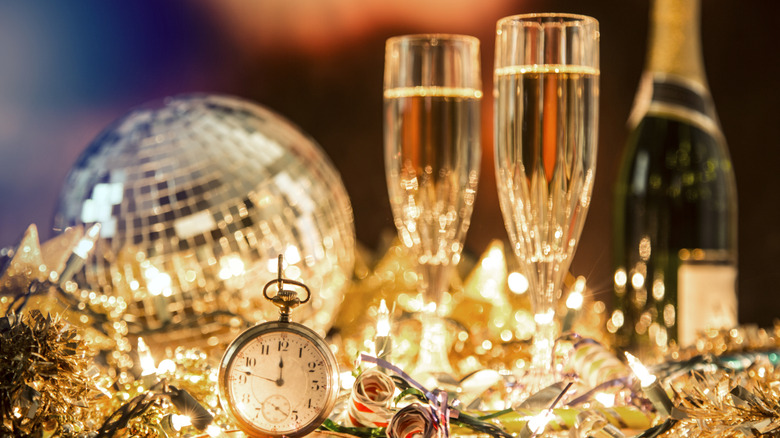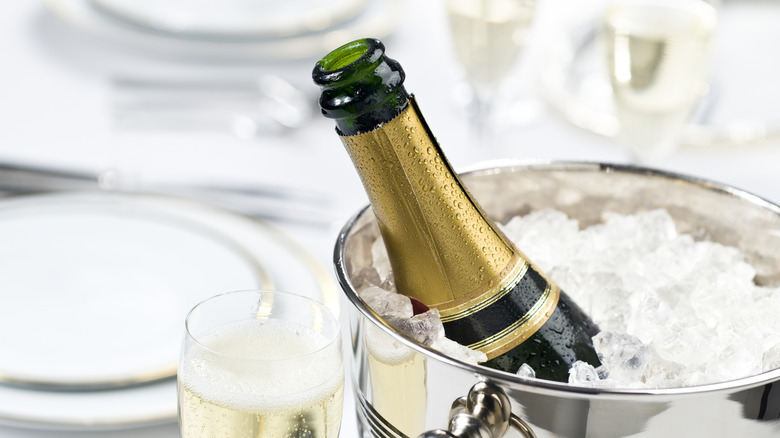How To Keep Open Champagne Bubbly On New Year's Eve Without A Stopper
We may receive a commission on purchases made from links.
It's New Year's Eve, and the corks are popping. Champagne, the quintessential bubbly for welcoming the coming year, is flowing from bottles to glasses, alongside many a wish, kiss, and hope for fresh starts. That's why the bottled belle of the New Year's ball simply cannot go flat. But the stopper's been pulled, the party is on, and the uncorked bottles must be open and accessible. Fortunately, there are ways to keep champagne bubbly throughout New Year's Eve — without pushing and pulling on stoppers all night long.
When champagne loses its effervescent luster, the biggest culprit is a change in carbon dioxide. The bottled champagne has been carbonated to create those bubbles we love. Once it's opened and poured, those bubbles rise in the glass or bottle, dissolving as they hit the surface and releasing the carbon dioxide. Thus, we get flat champagne.
One of best ways to slow down the release of carbonation is to keep the champagne icy cold. That doesn't mean constant dashes to and fro the refrigerator. A metal ice bucket or double-insulated stainless steel tub will suffice, covering the bottles by ice on all sides. If multiple uncorked bottles need chilling, don't worry about aesthetics. Have a trusty ice chest tucked into a corner of the room, and nestle the opened bottles upright in the compacted ice. There are more things you can do to stave off flatness, and they involve the glasses, the pouring, and the quality of the champagne.
Etched glasses and better champagne
If you've ever noticed etch marks in champagne glasses, it's not just for aesthetic appeal. They're typically on the inside of the glass, often at the bottom of the rounded bowl, where the engraved marks can help trap microscopic bubbles. The tiny etchings, sometimes hard to spot in high-quality champagne glasses, serve as so-called "nucleation sites" that release the bubbles in a light, fizzy stream.
It also helps to pour champagne slowly into the glass, which helps the fragile bubbles stay viable just a bit longer. If you do still feel a need to cover the bottle, just a light blanket of plastic wrap or foil could slow oxidation for a while, and it's easy for guests to remove when refilling their glasses. Finally, it matters what type of champagne you're bringing to the New Year.
All sparkling wines have bubbles, but they tend to be smaller and more resilient in pricier aged champagnes. That's often because the winemaker has put the wine through a time-intensive second fermentation inside the bottle, resulting in a constant stream of dancing bubbles during consumption. It's known as the French traditional champagne method wherein the extra yeast produces carbon dioxide that dissolves into the champagne. It's the same double-fermentation method use for making frothy crémant sparkling wines. By contrast, less expensive champagnes or sparkling wines may have the carbon dioxide injected straight into the champagne, creating larger bubbles that fizzle out more quickly.

